-
Posts
2,170 -
Joined
-
Last visited
Content Type
Profiles
Forums
Gallery
Events
Posts posted by JSGerson
-
-
-
-
-
Those were and still are my first and only carvings I've ever made. I just took it one small step at a time. All I can say is try it, you have nothing to lose (except wood and time) and who knows, you may be a unknown Michelangelo!
-
-
Thanks for the feed back. I always learn something from you.
-
Once the side's staves were all in place, the top and bottom were lapped until the final height was achieved.How was the final height achieved? How did you trim the excess wood on something so fragile? Did you just file or sand paper it?
- mattsayers148 and GLakie
-
 2
2
-
You had the same results as me on those moldings. Your triple molding doesn't look too bad from what I can see except the grooves aren't as pronounced as the double - same as I got. Those wooden molded surfaces are very delicate and will dent real easy. I immediately used a couple coats of poly-wipe to saturate the wood to protect them.
-
If the coals are hot in the oven, and there is a pot on the stove, then there has got to be something in the pot! Soup? Mush? Pot Roast?
- CaptainSteve, GLakie, Jack12477 and 2 others
-
 5
5
-
I don't remember if I had the interference problem with the oar sweeps you described. but your solution would have been the same as I would have done (did?).
Here is something else to consider at this point - the hull sheaves. Bob Hunt 's practicum discusses these much later (Chapter 9.7) as a simple add-on and look rather crude. I didn't even know they existed or what they were at this point in my build. However if I had known, this would have been the time to construct them or at least plan for them. Bob's method was to just drill a single hole in a small thin rectangular piece of wood and through the completed hull. This is actually a block built into the hull. It has a wide opening, a pulley wheel inside,.and is flush to the hull. Once I realized what they were, I tried to make mine at least look like they were built in.
They are probably numerous ways to construct these, but one method is to drill two holes in a rectangular block whose thickness is a little bit thicker than the completed hull. The openings (both sides) are then carved to simulate a block. It is installed in the proper position in the hull frame. Once the planking is completed around it (inside and out) the excess wood is sanded down flush to the hull surface.
Jon
-
Your hull sheaves look a lot more realistic than mine since mine were added after the hull planking was done. I assume you drilled holes in a piece of wood, did some carving, and inserted the piece through the hull with some support pieces.
What are the problems you discovered with the stern?
-
- KenW, Martin W, Salty Sea Dog and 2 others
-
 5
5
-
According to the references, the end of the futtock shroud was seized around the thimble. Since I wasn’t using a thimble I decided I would also forgo the seizing due to the scale. The seizing would have made making a small loop almost impossible Instead I used a technique I had seen described in various build log to make a pseudo eye splice and thus get the tiny splice I wanted.
Basically one takes the end of the thread/rope and passes it through itself once to create the loop and a second time to create the pseudo splice and added strength. A tiny dab of glue holds it all together and then the excess thread/rope is trimmed.
- CaptainSteve and Martin W
-
 2
2
-
-
The hook was made by first opening up the eyelet and then wrapping it around two tiny nails used for planking to create the shape which you can see in the first picture. After the excess wire was trimmed off, the hook then was squeezed with a pair smooth jaw plyers to flatten it and then filed smooth.
- CaptainSteve, Martin W and GuntherMT
-
 3
3
-
- GuntherMT, Martin W and CaptainSteve
-
 3
3
-
Chuck Passaro’s Syren Ship Model Company makes very nice laser-cut plastic hooks of various sizes. Unfortunately the physical hook of his smallest version will not pass through the hole I created when I made my futtock plates. That meant I had to make my own.
First I tried some aluminum wire I had for the color – too thick. Then I tried some very fine brass wire and got a beautiful hook. Too bad the wire was so pliable, a simple tug and the hook would straighten out and fall off. I didn’t dare attempt to heat temper it for fear of burning it up – too weak.
- CaptainSteve and Martin W
-
 2
2
-
Futtock Shrouds
The futtock shrouds is connected to the futtock plates above via a hook and lashed to the shrouds below. Normally the metal hook connects to a metal thimble seized on the end of the futtock shroud. Due to the difficulty of constructing a thimble at this scale and the ability to even see it even if it were there, I have elected not to create these thimbles. The diagram below is from Rigging Period Ship Models, by Lennarth Petersson.
- GuntherMT, CaptainSteve and Martin W
-
 3
3
-
Now that I see more of the model I recognized it as a 1797 version built by Mark Antczak at 1:48 scale. The site is at.shipmodel.com
-
GLakie - Are there more images the "72" version of the 1797 config."? I'm always looking for more sources to use when I finally start my attempt at the MS Constitution model. That probably won't be be for a year or two at the rate I building the Mamoli Rattlesnake. Is that model yours? It looks gorgeous.
-
-
-
That's the way I did it, I had all the finesse of a blind drunken sailor with hiccups.
If I knew how to do this easily, I would lock the Dremel horizontally so that the spinning disc would be downward at the point cutting. Then mount the razor blade flat on a notched piece of wood for solid support with the razor's edge flush with the wood piece's edge. The notch is where the cutting disc would engage the razor. Finally mount the razor and notch wood platform on an X-Y Table for absolute precise movement.
Jon
-
Yes, I had to buy the package of mandrels as well. Those don't break so I (and probably you as well) now have a lifetime supply of mandrels. As for the discs, well...At least the razor blades are cheap. I didn't know about using hacksaw blades as an alternative. Even if I did, I didn't have any new or old ones to use. Once the scraper was made, it held up rather well although my technique of using it could have used some improvement. I did not have to replace it due to breakage or wearing out.
What method of cutting the profile did you use?
You may have notice if you have read further into my log, that I tried not using scrapers if I could get away with it. I just found the scraper tedious so I tried to be a little imaginative with my Dremel drill press which I detailed in the log. Let me state now that I am not a fan of the Dremel drill press. I find it too loose and imprecise. It is plastic after all, but that was and still is all I have. One of these days I'll get a real milling machine.
Jon



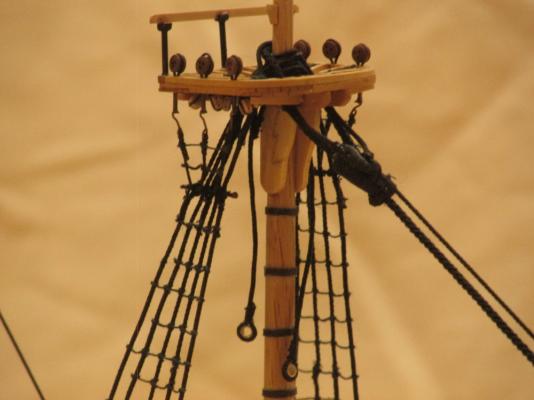
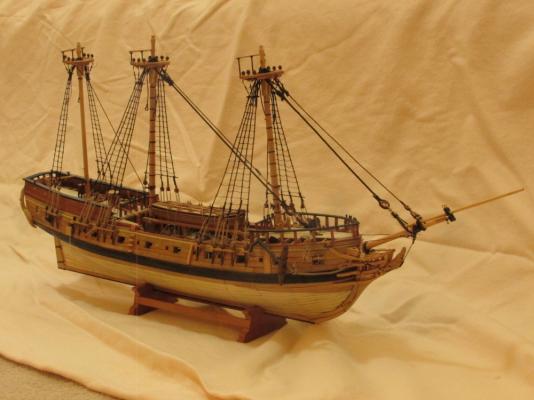
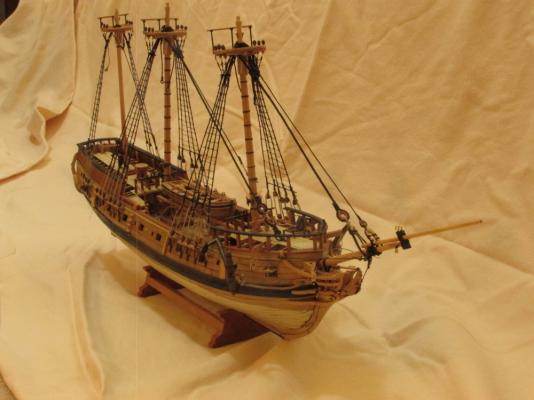
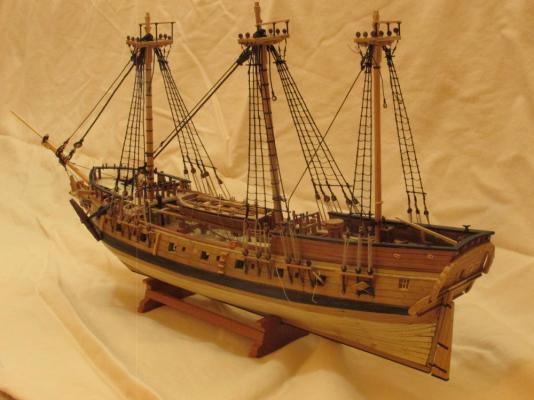
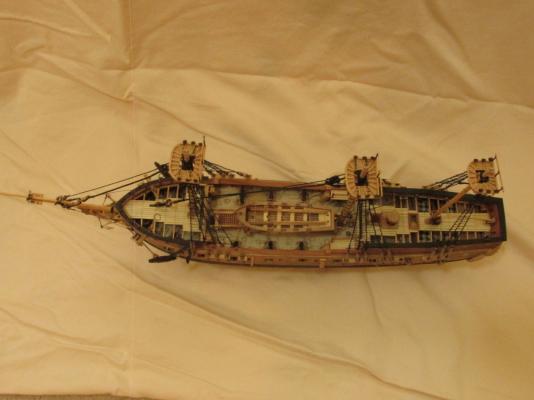
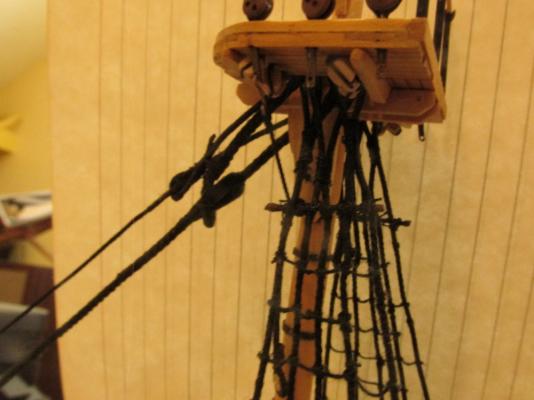
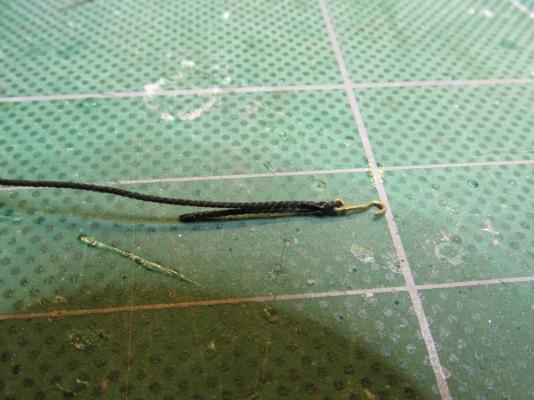
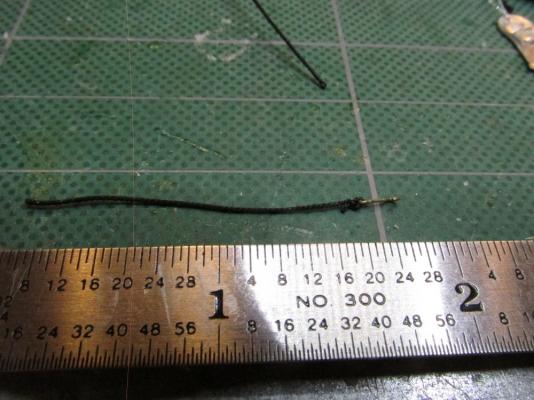
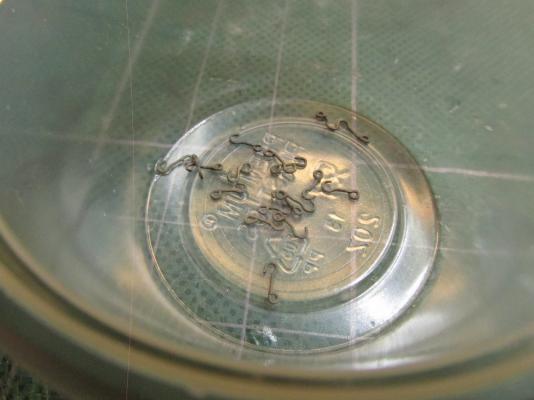


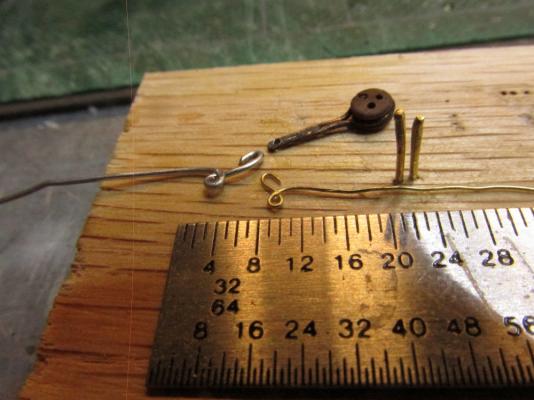
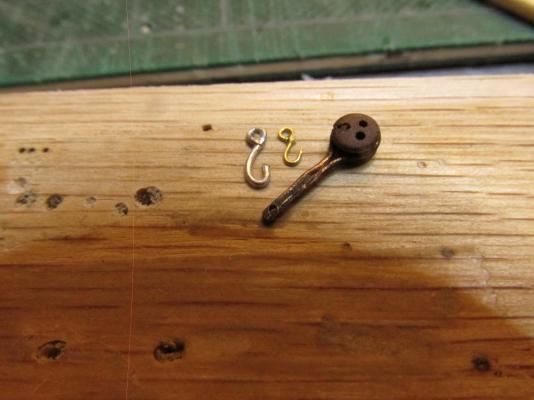
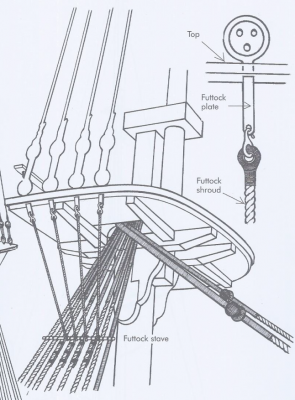
Rattlesnake by DocBlake - Mamoli - 1/64 scale - Bob Hunt kit-bash log
in - Kit build logs for subjects built from 1751 - 1800
Posted
I feel for you. As you know, I had problems with the transom as well.
Now I don’t know if this had anything to do with your problems, I documented a correction I had to make that the Practicum did not address. If you look at the image of the transom on Hahn’s plans, you are looking at a foreshortened view. A true view would be perpendicular to the face of transom. As a result, if you made your transom template directly from the Hahn plans, it was too short. I looked back over your build log and didn’t see anything where you addressed this (at least in the log).
A first glance, your transom, as compared to Mr. Hunt’s appears to be installed higher. I counted the planks below your transom windows and got five, the same as Mr. Hunt’s. On my model, I ended up with four. I think if you had four planks, the transom would shift down giving more room at the top. If you made the mistake I described above and corrected it, then that would make the transom taller and also force you to increase the angle from the vertical.
I don’t know if I helped or hindered you. Do what you have to otherwise you won’t feel right about the model. I’m not saying make it perfect, but make it something that you can accept and live with.
Good luck
Jonathan